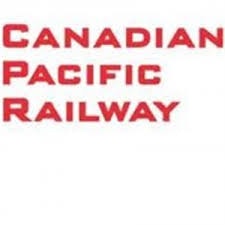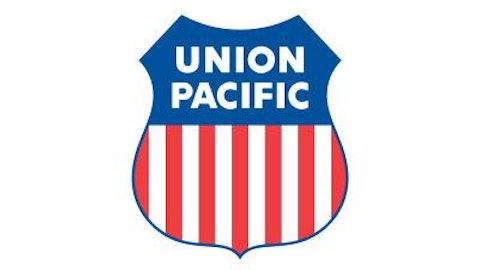Many investors liken railways to utilities and government bonds – relatively safe and predictable investments that are, well, maybe a bit boring. Investors considering adding Canadian Pacific Railway Limited (USA) (NYSE:CP) to their portfolios should be cautious, and understand several factors that may make their investments far riskier.

In October 2011, when successful activist investor Bill Ackman’s Pershing Square Capital announced that it had purchased a 12.2% stake in Canadian Pacific Railway Limited (USA) (NYSE:CP), investor anticipation for market-beating results began to grow. When Pershing Square’s ownership stake subsequently grew to 14.2% two months later, expectations accelerated. And when Canadian Pacific Railway Limited (USA) (NYSE:CP) CEO Fred Green and five board members were forced out to pave the way for the hiring of well respected Hunter Harrison, Canadian National Railway’s past president and CEO, expectations climbed to new heights.
Today, Canadian Pacific Railway Limited (USA) (NYSE:CP)’s stock price fully reflects those sky-high hopes. It’s valuation looks particularly expensive compared to Canadian National’s, regarded by many as the premier railroad in North America. Today, Canadian Pacific’s price-to-earnings ratio of 29.4 is nearly double that of Canadian National, and a significant premium to most first tier railroads, including Union Pacific Corporation (NYSE:UNP), CSX Corporation (NYSE:CSX) and Norfolk Southern Corp. (NYSE:NSC). A similar story holds true for most other valuation metrics.
Have playbook, will travel
Harrison is bringing his successful playbook for improved operational and financial performance to Canadian Pacific Railway Limited (USA) (NYSE:CP). All that’s left, some believe, is a small matter of execution.
Any plan to improve operational efficiency at Canadian Pacific will surely focus on cutting employee counts, running longer and faster trains, making better use of assets, and adopting new technologies to use less fuel and make workers more productive. And if the plan comes together as advertised, the result will be a dramatically lower operating ratio, significantly higher earnings, cash flow, and impressive returns for Canadian Pacific shareholders.
But the plan is flawed, and the implications significant for investors. At the end of 2012, Canadian Pacific Railway Limited (USA) (NYSE:CP)’s all-important operating ratio — how much of its revenue goes toward funding operations — was 77%. The company’s goal is to reduce that figure to 65% by 2015. That’s an incredible, some say impossible, objective to achieve in just three years.
Hunter Harrison took 12 years to accomplish a similar task at Canadian National, reducing its operating ratio from 77.3% in 1997 to 66.7% in 2009. Note that Canadian National made this progress during a robust economic environment, without a particularly strong competitor. Harrison can’t claim that now, since approximately 50% of Canadian Pacific’s track directly competes with Canadian National.




